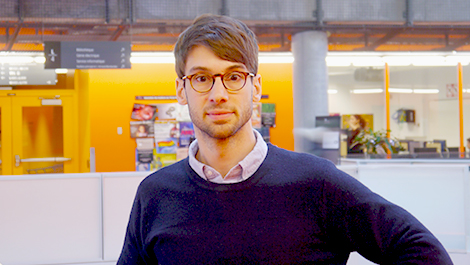
Research Webzine
Machine learning rides to the rescue of aging infrastructures
Professor James-A. Goulet, Department of Civil, Geological and Mining Engineering
Many cities must deal with aging infrastructures. Public authorities don’t have the means to replace or massively upgrade antiquated infrastructures. So how to ensure the safety and sustainable management of these networks?

Many cities must deal with aging infrastructures. Public authorities don’t have the means to replace or massively upgrade antiquated infrastructures. So how to ensure the safety and sustainable management of these networks? Professor James-A. Goulet suggests a solution involving techniques drawn from machine learning and artificial intelligence.
“Technology enables us to gather information on the state of structures on a continuous basis,” he notes. “By installing sensors that provide data on movements, rotations, distortions and accelerations in the structures, as well as environmental conditions, it is possible to judge the structures’ condition based on their behaviour.”
Broadening the use of sensors to many installations would be an economically viable solution, given that these measuring devices have become relatively inexpensive and commonly available.
However, processing this information to come up with the right remedies becomes a much harder task when dealing with all the tens of thousands of aging infrastructures in Canada. Creating a personalized behaviour model for each one is simply not an option.
“You need a model that can be tailored to numerous different structures,” Professor Goulet adds. He emphasizes two major problems arising from the complexity of the interplay between infrastructure and the environment: the huge amount of data that a large infrastructure network generates, as well as the missing or abnormal data that are hard to distinguish from truly alarming data.
By relying on theories of probability and of decision, the researcher is developing algorithms that can identify normal behaviour and detect abnormal behaviour so as not to incorporate them in their calculations.
“Once you learn the normal behaviour, you can detect all deviations,” he says, noting that this kind of cognitive reasoning, when combined with computing power, exceeds the human capacity to observe anomalies in structural behaviour. Professor Goulet is now trying to make it possible for these generic models to self-calibrate so that solutions developed can be extrapolated to thousands of different structures.




